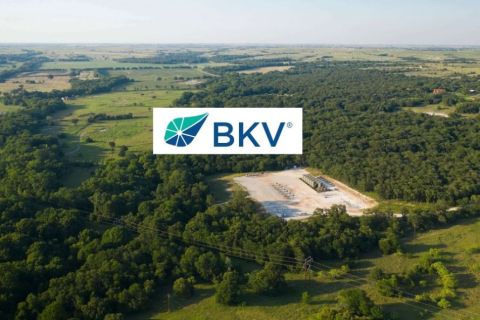
What does the industry need to do to get more ethane recovery?
First, attend Hart Energy’s Midstream Texas conference and listen to Bernadette Johnson, managing partner and director for research and analytics at Denver-based Ponderosa Advisors LLC.
Then, realize that there needs to be a price spread between natural gas and ethane—not a lot, she told attendees at this week’s event in San Antonio, but there has to be something there. And, the price must be sufficient to cover transport and fractionation costs.
 That last point incorporates some variance because it depends on where operations are located. But Johnson and her team at Ponderosa think 35 cents per gallon (gal) will cover costs, even in remote areas like the Bakken Shale.
That last point incorporates some variance because it depends on where operations are located. But Johnson and her team at Ponderosa think 35 cents per gallon (gal) will cover costs, even in remote areas like the Bakken Shale.
“We do think ethane prices will recover because gas prices will recover,” she said, adding that Ponderosa expects $4 natural gas in 2017. “We don’t think that you’re going to see a strong recovery to historical linkages; we think it’s going to stay close to parity. There’s going to be a little bit of a spread there. It’s going to get stronger and, really, it’s driven by gas price and also demand.”
The demand side is promising. Eight world-scale crackers, now under construction, will take almost 550,000 barrels per day (bbl/d) of ethane—a big chunk of the 700 Mbbl/d that is currently rejected, she said.
Then there are the export facilities, including several on the Houston Ship Channel, that are beginning to send out cargoes, many intended for India. In 2017, Johnson said, those shipments will ramp up pretty quickly.
Becca Followill, senior managing director of U.S. Capital Advisors LLC, agreed with Johnson’s assessment but expressed reservations.
“We’re more cautious on ethane because we think the plants may get delayed,” she said. “It’s probably going to be 2019 before you see full ethane recovery, so we’re in the improvement camp, just maybe a little bit slower.”
I ronically, for a discussion at a conference centered on Texas, the critical aspect for ethane will be what happens elsewhere.
ronically, for a discussion at a conference centered on Texas, the critical aspect for ethane will be what happens elsewhere.
“When we look at where ethane is being recovered today, a lot of it is around the U.S. Gulf area because it is the cheapest for transport,” Johnson said, citing proximity to the Mont Belvieu, Texas, hub. “It’s right here next to the market. You don’t have the high transport needs or the transport costs.
“If you look at where the rejection is happening, certainly there’s some in Texas; but there’s a lot in the Rockies; there’s a lot in the Bakken; there’s a lot in the Northeast,” she said. “Those are the areas that are going to really need the incremental ethane as we start pulling more out of the stream.”
As weeks go, this was a good one for the hypothetical NGL barrel. The price was up 7% at Mont Belvieu and 7.2% at Conway, Kan. Ethane jumped 9.4% at Mont Belvieu to 19.54 cents/gal and Conway saw a 7.6% rise to 16.95 cents/gal, the highest point for both since the first week of July.
Propane, in a swoon since May, was up 6.6% at Mont Belvieu and 8.6% at Conway. Butane cracked 60 cents/gal at Mont Belvieu for the first time since mid-July and rose 6% at Conway to within striking distance at 58.58 cents/gal.
 Isobutane was up 6.4% at Mont Belvieu and 7.9% at Conway, and C5 pushed back toward $1/gal with a 6.5% gains at both hubs.
Isobutane was up 6.4% at Mont Belvieu and 7.9% at Conway, and C5 pushed back toward $1/gal with a 6.5% gains at both hubs.
Storage of U.S. natural gas rose by 62 billion cubic feet (Bcf) in the week ending Sept. 9, surpassing the Bloomberg consensus of 59 Bcf for a total of 3.499 Tcf. That figure is 5.6% higher than the level set at the same time last year and is 9.3% over the five-year average of 3.2 Tcf.
Joseph Markman can be reached at jmarkman@hartenergy.com and @JHMarkman.
Recommended Reading
Utica Oil E&P Infinity Natural Resources Latest to File for IPO
2024-10-05 - Utica Shale E&P Infinity Natural Resources has not yet set a price or disclosed the number of shares it intends to offer.
Woodside Reports Record Q3 Production, Narrows Guidance for 2024
2024-10-17 - Australia’s Woodside Energy reported record production of 577,000 boe/d in the third quarter of 2024, an 18% increase due to the start of the Sangomar project offshore Senegal. The Aussie company has narrowed its production guidance for 2024 as a result.
ConocoPhillips Hits Permian, Eagle Ford Records as Marathon Closing Nears
2024-11-01 - ConocoPhillips anticipates closing its $17.1 billion acquisition of Marathon Oil before year-end, adding assets in the Eagle Ford, the Bakken and the Permian Basin.
BKV Prices IPO at $270MM Nearly Two Years After First Filing
2024-09-25 - BKV Corp. priced its common shares at $18 each after and will begin trading on Sept. 26, about two years after the Denver company first filed for an IPO.
Exxon, Chevron Beat 3Q Estimates, Output Boosts Results
2024-11-01 - Oil giants Chevron and Exxon Mobil reported mixed results for the third quarter, with both companies surpassing Wall Street expectations despite facing different challenges.
Comments
Add new comment
This conversation is moderated according to Hart Energy community rules. Please read the rules before joining the discussion. If you’re experiencing any technical problems, please contact our customer care team.





